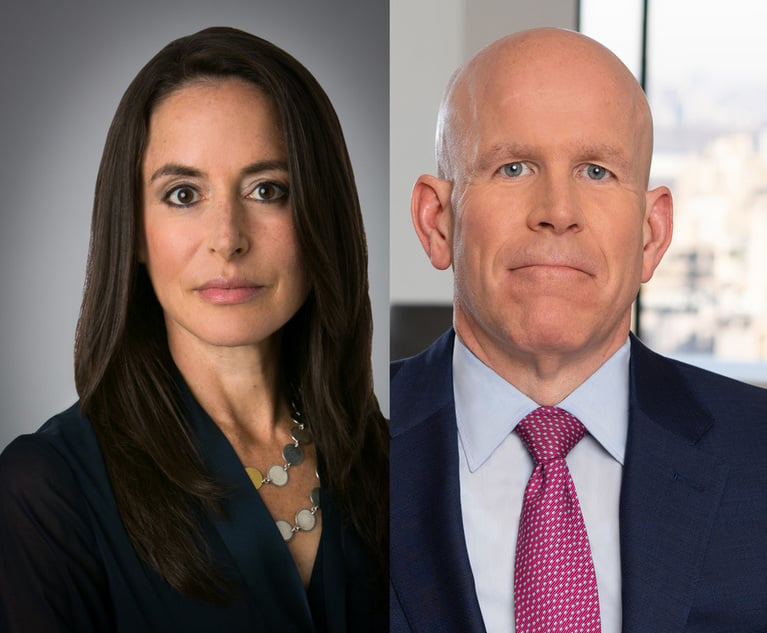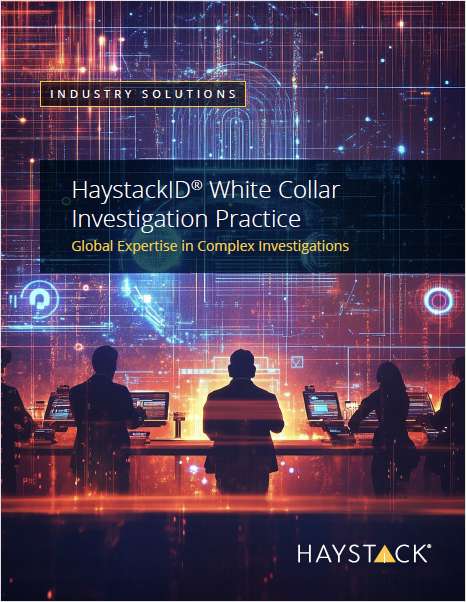 Getty Images/iStockphoto
Getty Images/iStockphotoMobile Devices Become Important Resource as Texts, Chats Replace Emails
The "What's in Your Smartphone" panel at Legalweek dove into the many ways that smartphones can be used to shed light on an investigation. Sometimes what's not on a device is as important as what is.
January 31, 2019 at 10:21 AM
3 minute read
The original version of this story was published on Legal Tech News
Attendees of the "What's in Your Smartphone" panel at Legalweek 2019 walked away with a handy nugget of legal advice for their troubles.
"If you're going to commit a crime, maybe it's best to leave your phone at home," said panelist Anna Clark, a partner at Phillips Lytle.
The rest of session tended to bear her out on that one, devoting an hour to the many, many, many different ways that cellphone data can be used during the course of an investigation to help shed light on a criminal or legal matter.
Warren Singh, supervisor of practice technology consulting at Latham & Watkins, used the example of a man who was harassing an ex-girlfriend. Geotagged selfies inside his phone helped to establish he had been in her vicinity.
"Understanding how clients are using these devices has really caused us to pause in how we approach cellphone data," Singh said.
But getting that data is not without it's hurdles. Employees who use personal phones at work, for example, may resist attempts by employers to retrieve data during the course of an investigation. Clark said that courts are generally requiring that this information be turned over.
Brian Morrison, principal e-discovery analyst at Liberty Mutual, perhaps has a clearer path forward than employers who are trying to obtain information from an employee's personal mobile device. He's typically dealing with phones that are COPE (corporate-owned, personally enabled).
"One of the big issues is how do you get the phone? Well, it's our phone, so hand it over," Morrison said.
Once the phone comes into their possession the investigation becomes about tracking patterns in the data. What is the first/last call the person makes every day? How do they label their contacts? A derogatory name, for example, could add context to a communication.
Patterns are also useful for identifying code words hidden inside messages.
"When people start saying 'Merry Christmas' and it's August that throws up some flags," Morrison said.
Laura Roman, a panelist and litigation operations and e-discovery specialist with the New York Stock Exchange, pointed out how data that is conspicuously absent from a mobile device can help paint a picture, too. In the case of financial transaction, for instance, a lack of data pertaining to Venmo, a mobile payment service, could be considered an oddity.
According to Roman, stock exchange investigations had previously revolved around trading data. Only in the last year have they started looking more closely at information and messages collected from mobile devices.
"We're starting to pay closer and closer communications to those communications instead of email," Roman said.
This content has been archived. It is available through our partners, LexisNexis® and Bloomberg Law.
To view this content, please continue to their sites.
Not a Lexis Subscriber?
Subscribe Now
Not a Bloomberg Law Subscriber?
Subscribe Now
NOT FOR REPRINT
© 2024 ALM Global, LLC, All Rights Reserved. Request academic re-use from www.copyright.com. All other uses, submit a request to [email protected]. For more information visit Asset & Logo Licensing.
You Might Like
View All
'You Can’t Do a First Draft of Common Sense': Microsoft GC Jon Palmer Talks AI, Litigation, and Leadership

Big Law Communications, Media Attorneys Brace for Changes Under Trump
4 minute read

Polsinelli's Revenue and Profits Surge Amid Partner De-Equitizations, Retirements
5 minute readTrending Stories
- 1DOJ Asks 5th Circuit to Publish Opinion Upholding Gun Ban for Felon
- 2GEO Group Sued Over 2 Wrongful Deaths
- 3Revenue Up at Homegrown Texas Firms Through Q3, Though Demand Slipped Slightly
- 4Warner Bros. Accused of Misleading Investors on NBA Talks
- 5FTC Settles With Security Firm Over AI Claims Under Agency's Compliance Program
Who Got The Work
Michael G. Bongiorno, Andrew Scott Dulberg and Elizabeth E. Driscoll from Wilmer Cutler Pickering Hale and Dorr have stepped in to represent Symbotic Inc., an A.I.-enabled technology platform that focuses on increasing supply chain efficiency, and other defendants in a pending shareholder derivative lawsuit. The case, filed Oct. 2 in Massachusetts District Court by the Brown Law Firm on behalf of Stephen Austen, accuses certain officers and directors of misleading investors in regard to Symbotic's potential for margin growth by failing to disclose that the company was not equipped to timely deploy its systems or manage expenses through project delays. The case, assigned to U.S. District Judge Nathaniel M. Gorton, is 1:24-cv-12522, Austen v. Cohen et al.
Who Got The Work
Edmund Polubinski and Marie Killmond of Davis Polk & Wardwell have entered appearances for data platform software development company MongoDB and other defendants in a pending shareholder derivative lawsuit. The action, filed Oct. 7 in New York Southern District Court by the Brown Law Firm, accuses the company's directors and/or officers of falsely expressing confidence in the company’s restructuring of its sales incentive plan and downplaying the severity of decreases in its upfront commitments. The case is 1:24-cv-07594, Roy v. Ittycheria et al.
Who Got The Work
Amy O. Bruchs and Kurt F. Ellison of Michael Best & Friedrich have entered appearances for Epic Systems Corp. in a pending employment discrimination lawsuit. The suit was filed Sept. 7 in Wisconsin Western District Court by Levine Eisberner LLC and Siri & Glimstad on behalf of a project manager who claims that he was wrongfully terminated after applying for a religious exemption to the defendant's COVID-19 vaccine mandate. The case, assigned to U.S. Magistrate Judge Anita Marie Boor, is 3:24-cv-00630, Secker, Nathan v. Epic Systems Corporation.
Who Got The Work
David X. Sullivan, Thomas J. Finn and Gregory A. Hall from McCarter & English have entered appearances for Sunrun Installation Services in a pending civil rights lawsuit. The complaint was filed Sept. 4 in Connecticut District Court by attorney Robert M. Berke on behalf of former employee George Edward Steins, who was arrested and charged with employing an unregistered home improvement salesperson. The complaint alleges that had Sunrun informed the Connecticut Department of Consumer Protection that the plaintiff's employment had ended in 2017 and that he no longer held Sunrun's home improvement contractor license, he would not have been hit with charges, which were dismissed in May 2024. The case, assigned to U.S. District Judge Jeffrey A. Meyer, is 3:24-cv-01423, Steins v. Sunrun, Inc. et al.
Who Got The Work
Greenberg Traurig shareholder Joshua L. Raskin has entered an appearance for boohoo.com UK Ltd. in a pending patent infringement lawsuit. The suit, filed Sept. 3 in Texas Eastern District Court by Rozier Hardt McDonough on behalf of Alto Dynamics, asserts five patents related to an online shopping platform. The case, assigned to U.S. District Judge Rodney Gilstrap, is 2:24-cv-00719, Alto Dynamics, LLC v. boohoo.com UK Limited.
Featured Firms
Law Offices of Gary Martin Hays & Associates, P.C.
(470) 294-1674
Law Offices of Mark E. Salomone
(857) 444-6468
Smith & Hassler
(713) 739-1250








